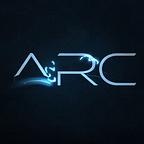Introduction
ARC has recently decided to adopt a SaaS (Software as a Service) model for its product, the ARC Reactor. In this article, we’ll explore the reasons why ARC made this decision and how the SaaS model can benefit both the company and its customers.
What is SaaS?
Before we delve into the specific reasons for ARC’s decision, let’s first define what SaaS is and how it differs from other software delivery models. SaaS is a software delivery model in which a software application is offered by a third-party provider and made available to customers over the internet. Instead of purchasing and installing software on their own computers or servers, customers subscribe to the software on a monthly or annual basis and access it through a web browser.
One of the primary advantages of SaaS is that it allows customers to access the software on demand, without the need for expensive upfront investments. This makes it an attractive option for businesses that want to minimize their infrastructure expenses and focus on their core competencies.
Why did ARC choose a SaaS model?
There are several reasons why ARC chose to go with a SaaS model for the ARC Reactor. Here are a few key considerations:
Scalability
One of the main benefits of SaaS is that it allows companies to scale their products quickly and efficiently. With a SaaS model, ARC can easily add new customers and increase its revenue without having to address the challenges of installing and maintaining software on individual computers or servers.
Cost savings
By subscribing to the ARC Reactor on a monthly or annual basis, customers can save money on upfront software purchases and ongoing maintenance costs. This can be particularly attractive for small businesses or startups that may not have the resources to invest in expensive software licenses or infrastructure.
Increased accessibility
With a SaaS model, customers can access the ARC Reactor from any device with an internet connection, making it easier for them to collaborate and work remotely. This can be particularly useful for web3 developers who may need to work on projects with colleagues or clients located in different locations.
ARC SaaS Model Components
ARC has highlighted three main areas where revenue will be generated in our SaaS model. They have been broken down into three sections in order to better explain this process and thus allude to the reasons why this type of model was used.
1. Subscription Fees
Customers will be required to pay a subscription fee based on their level of membership to the Reactor. This level of membership allows for different features and support levels and costs will range between these different membership levels.
It’s important to be able to reduce as many barriers to entry for the Reactor and this is why we have decided to accept fiat currency as well as crypto payments for this service.
Offering regular payments (e.g. credit card, debit card, bank transfer) as well as crypto payments can be a good idea for a number of reasons.
First, it can increase the number of potential customers that a business can serve. Some people may prefer to pay with cryptocurrency because it offers certain benefits such as lower fees, faster transaction times, and increased privacy. By offering the option to pay with cryptocurrency, a business can attract these customers and potentially increase its sales.
Second, offering both regular payments and crypto payments can also help a business stay up-to-date and competitive in an increasingly digital world. As the use of cryptocurrency becomes more widespread, it is possible that more and more people will want to pay with it. By having both options we are able to stay agile in onboarding new customers, with little extra work required to manage these customer requirements.
Finally, we have had some customers express a desire to pay subscription fees in fiat currency. It’s important that this initial feedback is taken on board and that we open-mindedly cater the product to suit the total addressable market.
While this model ensures that ARC can cater for the widest possible market, ARC has also taken measures to ensure that the token remains the core of our ecosystem through $ARC Staking.
2. $ARC Staking
The way we’ve structured our SaaS model allows users to save on SaaS fees by staking their ARC tokens. This is where Web2 meets Web3. The savings users can expect from staking will scale with the number of tokens they stake. By leveraging $ARC staking to provide fee savings the $ARC Token remains at the very core of our ecosystem while allowing customers to interact with the Reactor using fiat currency or cryptocurrency for subscription payments.
Here’s an example of how fee savings scale with $ARC Staking. This table is for demonstration purposes only.
3. Push Fees
The Reactor runs on the user’s browser and the files are stored locally. When users commit their work to the blockchain they will incur push fees/gas fees to commit this data on-chain.
Transactions on the Ethereum (and other networks) network require “gas,” which is paid for in the form of Ether, the native cryptocurrency of Ethereum. The amount of gas required for a transaction depends on the complexity of the operation being performed. The more complex the operation, the more gas it will require. ARC will take a very small percentage of these push fees as revenue.
Conclusion
ARC’s decision to adopt a SaaS model for the ARC Reactor was driven by a number of factors, including scalability, cost savings, and increased accessibility. By offering the software to customers on a subscription basis, ARC is able to provide a comprehensive and cost-effective toolkit for web3 development that meets the needs of a wide range of customers.
